The Magma Copper Mine AC system designed by the Carrier Corporation was the first underground mechanical air conditioning system in North America. The initial installation of refrigerated cooling equipment in the Magma Mine at Superior, Arizona was necessary due to the increase in temperature lower into the mine. Below the 2000-foot level, the increase in rock temperature is approximately 1½ degrees F. per 100 feet of depth. The rock temperature on the 2000-foot level is 109°.
AZ
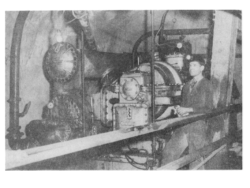
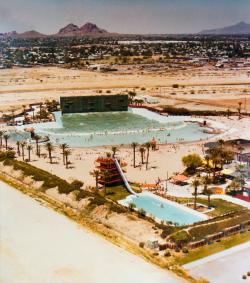
The first wave pool in North America to consistently generate 3-5 foot spilling waves suitable for surfing
Big Surf Waterpark uses 15 gates that empty water into a 2.5 acre lagoon with contours that replicate a natural beach. Waves are produced by pumping water to a pre-selected height and released through underwater gates. The water released breaks over a baffle (similar to a natural reef), forming one wave per cycle. Water is recirculated to the lagoon through pumps.
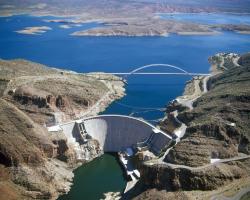
The first electric power generated by the Theodore Roosevelt Dam for commercial use was transmitted over a high-voltage line to Phoenix, where it was employed to operate the city's new streetcar system.
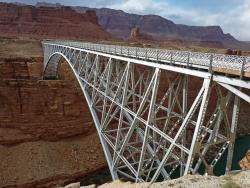
Navajo Bridge spans Marble Canyon, 470 feet above the Colorado River in Grand Canyon National Park. It was considered the highest steel arch bridge in America when completed.
The Navajo Bridge (also known as the Grand Canyon Bridge) was built in 1929 by the Arizona Highway Department and provided a vital transportation link over the Grand Canyon between northern Arizona and southern Utah. Construction commenced by building on one side of the canyon, then on the other, until the two sides met in the middle.
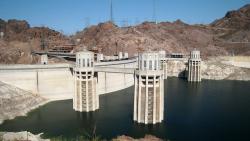
In 1918, the U.S. Reclamation Service's director and chief engineer Arthur P. Davis proposed a dam of unprecedented height to control the devastating floods on the Colorado River, generate hydroelectric power, and store the river's ample waters for irrigation and other uses.
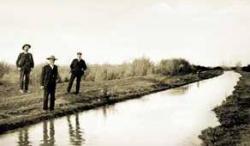
Developed by the Hohokam, a prehistoric group of Native Americans, the canal system in the Salt River Valley serviced more than 100,000 acres of mostly arid desert country in what is now southern Arizona. The prehistoric Hohokam constructed one of the largest and most sophisticated irrigation networks ever created using pre-industrial technology.
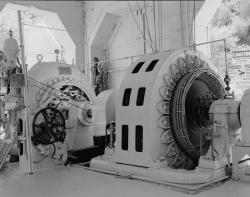
Innovations

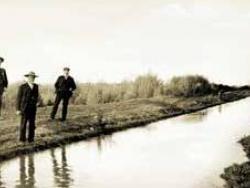
Developed by the Hohokam, a prehistoric group of Native Americans, the canal system in the Salt River Valley serviced more than 100,000 acres of mostly arid desert country in what is now southern Arizona. The prehistoric Hohokam constructed one of the largest and most sophisticated irrigation…
Read More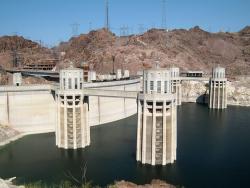
In 1918, the U.S. Reclamation Service's director and chief engineer Arthur P. Davis proposed a dam of unprecedented height to control the devastating floods on the Colorado River, generate hydroelectric power, and store the river's ample waters for irrigation and other uses. A dam project of…
Read More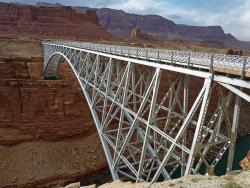
Navajo Bridge spans Marble Canyon, 470 feet above the Colorado River in Grand Canyon National Park. It was considered the highest steel arch bridge in America when completed.
The Navajo Bridge (also known as the Grand Canyon Bridge) was built in 1929 by the Arizona Highway Department and…
Read More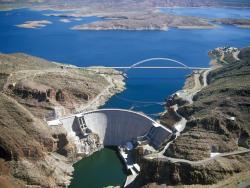
The first electric power generated by the Theodore Roosevelt Dam for commercial use was transmitted over a high-voltage line to Phoenix, where it was employed to operate the city's new streetcar system.
The Salt River Project, including the Theodore Roosevelt Dam, was the first major…
Read More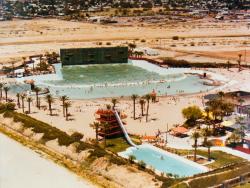
The first wave pool in North America to consistently generate 3-5 foot spilling waves suitable for surfing
Big Surf Waterpark uses 15 gates that empty water into a 2.5 acre lagoon with contours…
Read More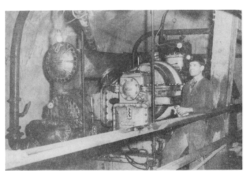
The Magma Copper Mine AC system designed by the Carrier Corporation was the first underground mechanical air conditioning system in North America. The initial installation of refrigerated cooling equipment in the Magma Mine at Superior, Arizona was necessary due to the increase in temperature…
Read More

